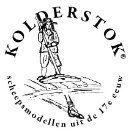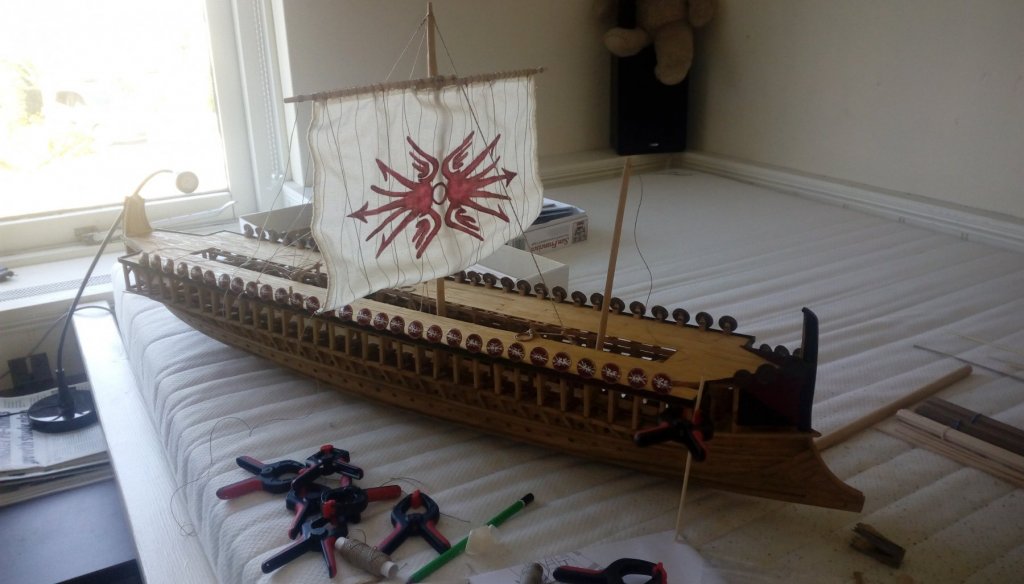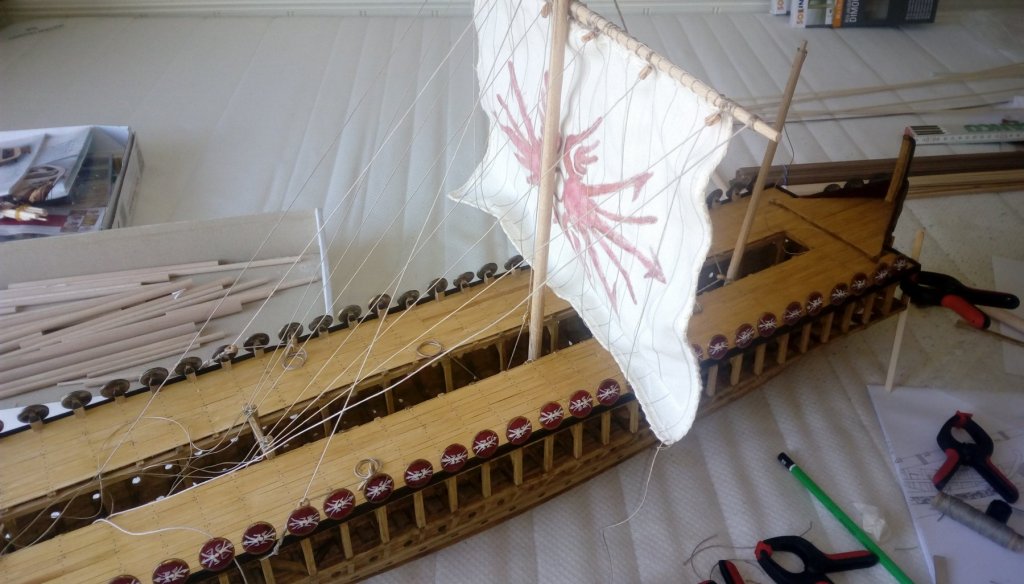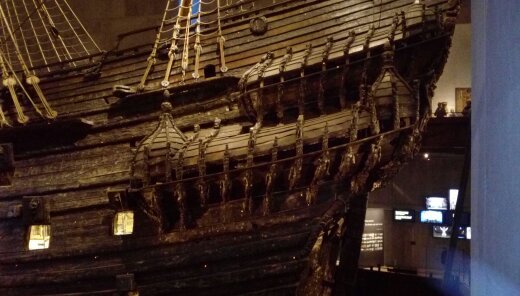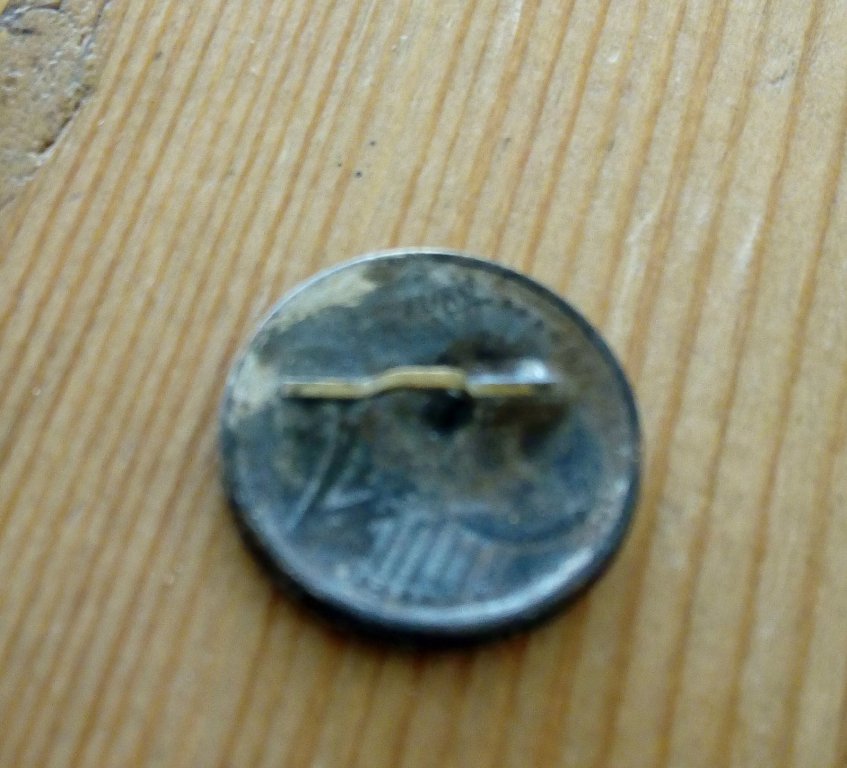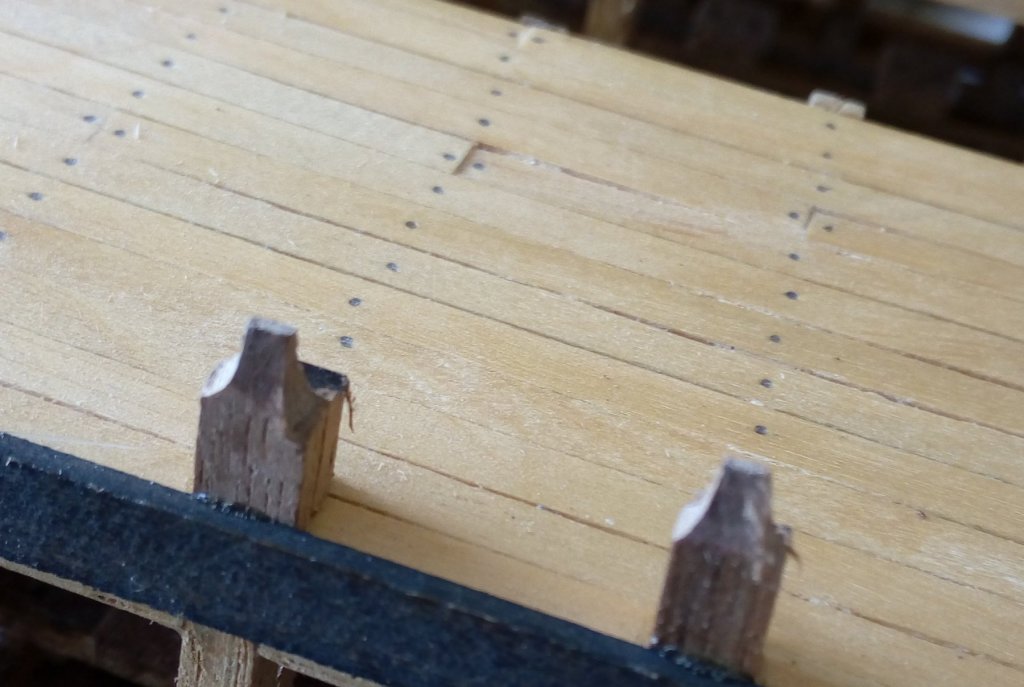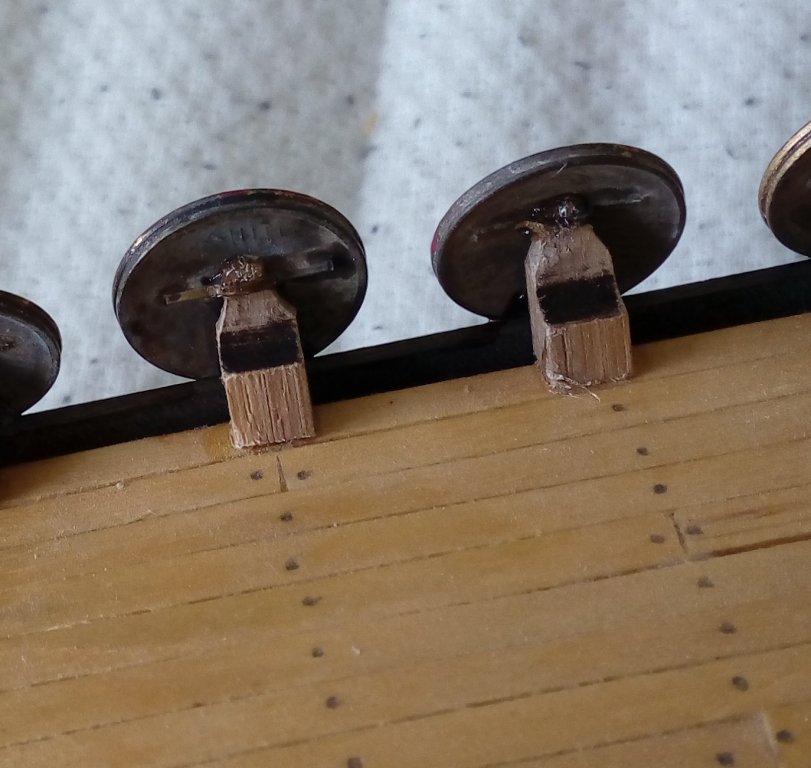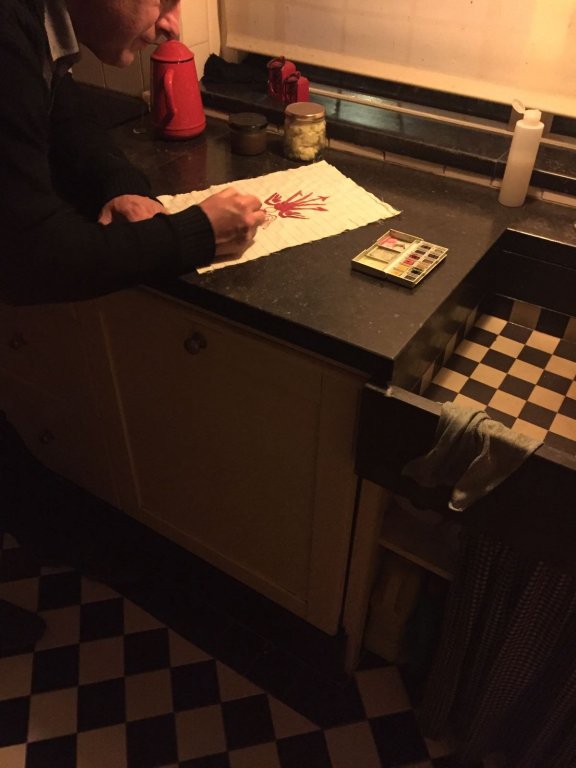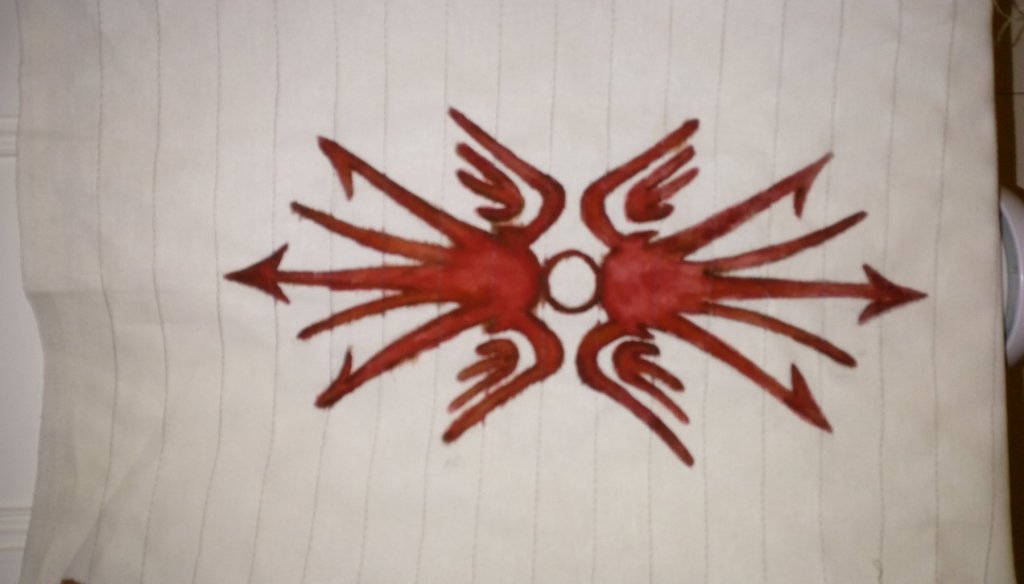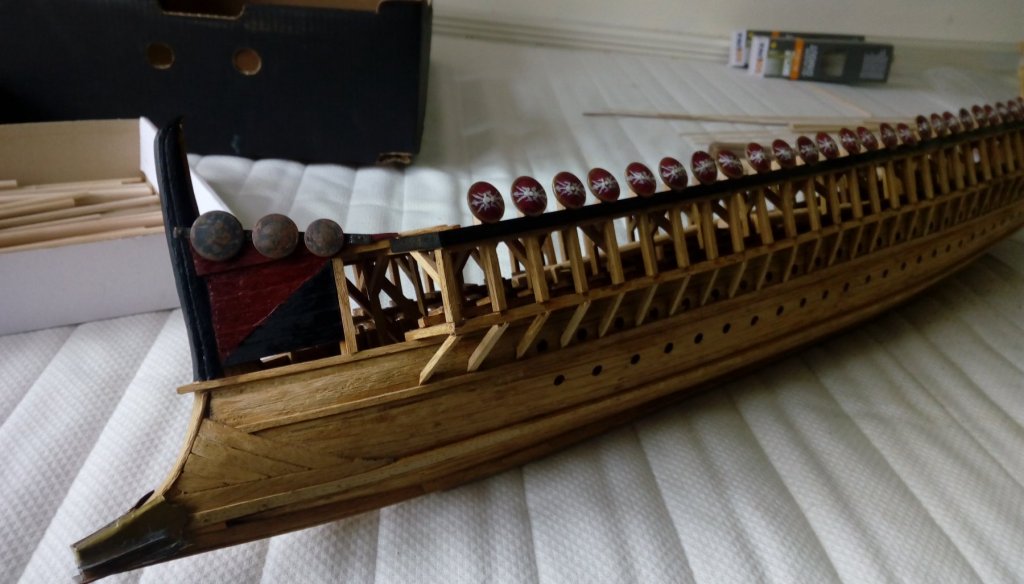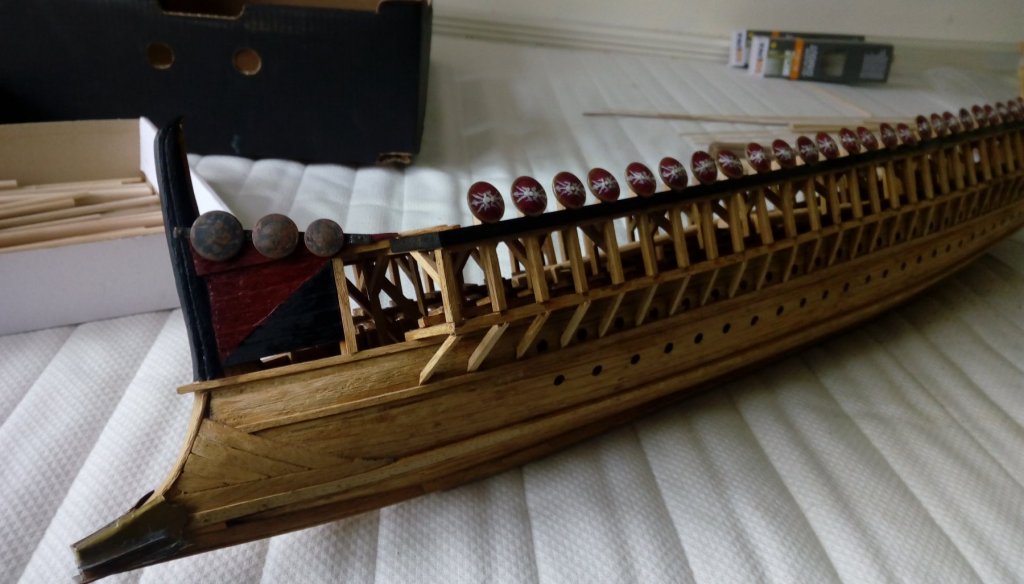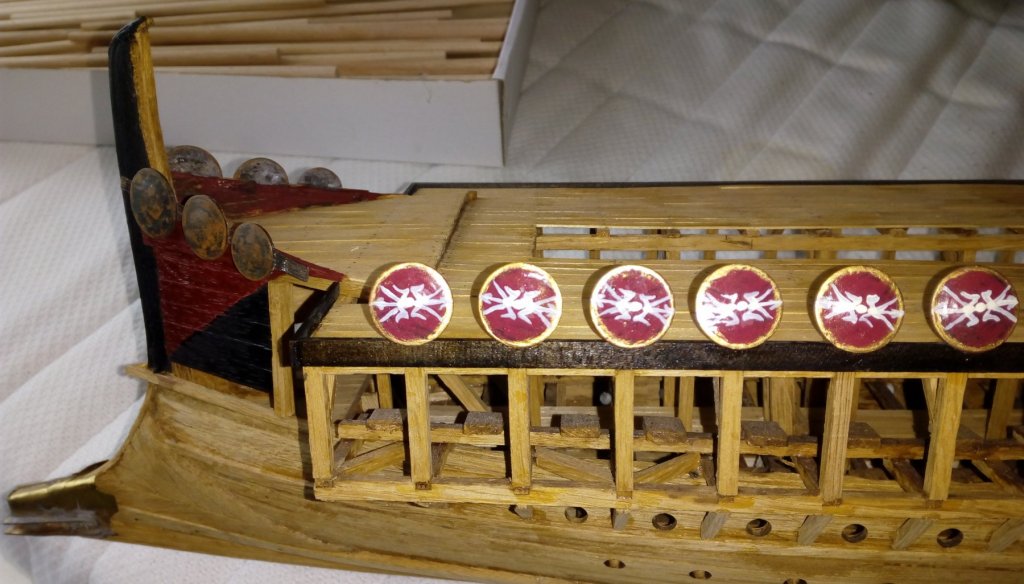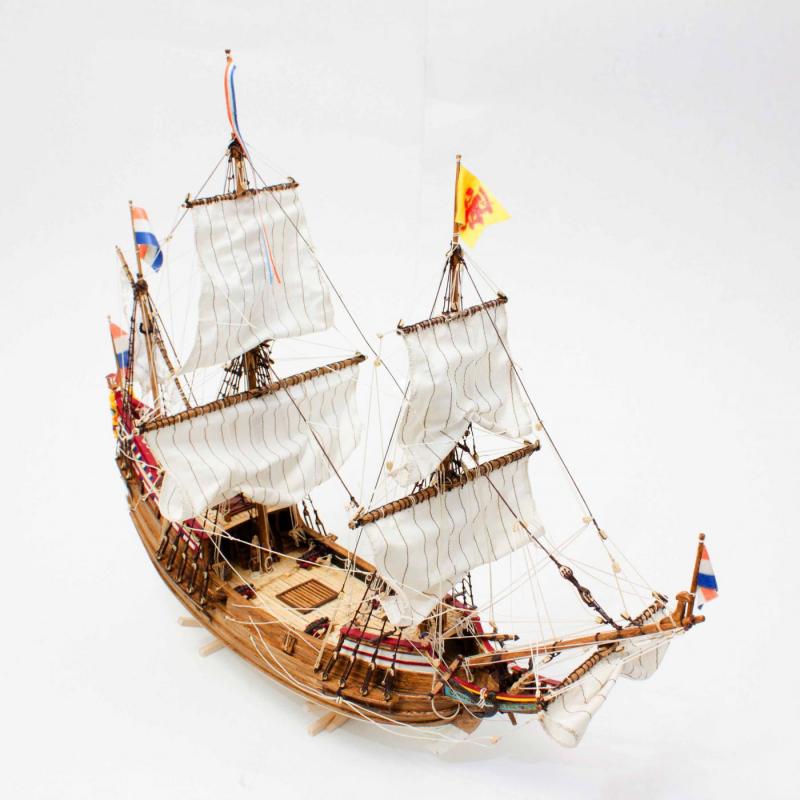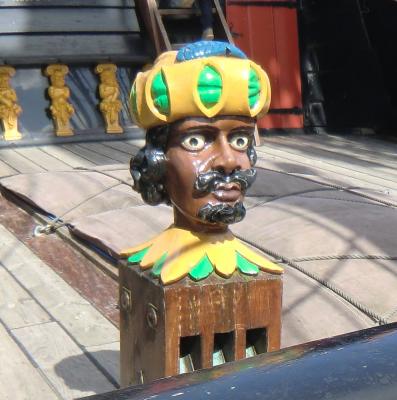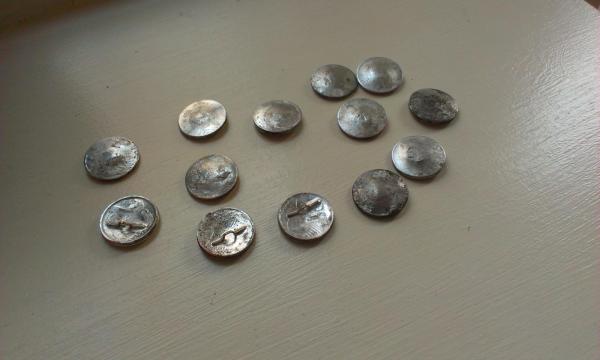-
Posts
450 -
Joined
-
Last visited
Content Type
Profiles
Forums
Gallery
Events
Everything posted by *Hans*
-
Hi Anton! Long time no see. Is your Leeuwin already finished?
- 322 replies
-
- sergal
- sovereign of the seas
- (and 5 more)
-
Nice! Although the POF way of building is the more original, the POB looks more like a ship to me. Funny how we get used to the nowadays usual way of building models...
- 305 replies
-
- utrecht
- statenjacht
-
(and 1 more)
Tagged with:
-
As I am working on three ships at the same time it all goes a bit slower (beginning of May we have a little show with ancient sailing ships in Rotterdam, NL, and I want to show four vessels which all have to be in some state of finish). The Trireme fits very good to this show - as she has one of her sails attached:
-
We can start a nice discussion about this - as a parallelogram shaped gun port where the turning axle of the hinges are not in the same line simply cannot be opened. Two hinges beside each other need the same axle line to function properly. And if you mount the hinges under a specific angle so there turning lines are the same then the form of the port gives trouble to open. The vertical sides of a gun port were vertical - that's correct, but regarding the horizontal lines: the lower one could follow the deck (but this was surely not always the case), but the upper one was always under a 90º angle with the vertical sides. So a square gun port is very original. Attached a photo of the Vasa (Wasa) which is the excisting proof of how it was done (this is the original ship from 1628 - same time as the Batavia). Due to the back light the form of the gun ports is clearly visible.
-
Made them with my cell phone, so not the highest quality - sorry. Backside of the shield. These are in fact 2-cent coins - made convex - tinned and then soldered a small brass handle onto it. On the ship itself I have placed poles - with a sharp end sanded to it: And the shield can be put with its handle over this pole: It looks a bit fuzzy due to the glue. Normally it should not be glued of course, but I don't want them to get lost during building etc.
-
Hey Robin, Didn't have a look at your Bireme build until now. Looking good. I made a Bireme as well for my son (ho studied archeology) and than started a scratch trireme in the same scale. This turned out to be a huge thing of about 1 meter length. Picture of how far I am now:
- 473 replies
-
- greek bireme
- dusek
-
(and 1 more)
Tagged with:
-
I sanded a sharp tip at the side-end of small piece of oak 3x3 mm (roughly 1 cm length) and glued this pole onto the deck. The shield has a handle on the backside and this fits onto the sharp end of the pole. In this way the shields hang loose on the side, so they could easily be taken of when needed during battle. In my case the shields are glued onto the pole so they stay in place. But mind you: there is no evidence whatsoever that this was done in real. It is just my imagination that this could have been done in this way (and it gives a nice extra to the model).
-
Which is in fact the best way to do it. After knotting the first ratline just put the planks on top of it - correct the level when necessary and knot the second ratline. Correct the level again by tapping the knot a bit down or up - white glue over it (you can do this in the end as well) and proceed to the top. Another fact almost no one knows: due to shrinking of the rope the ratlines always had some more length than the space between the shrouds, they always hung a bit loose. So don't knot them as tight as possible - and the hourglass effect will not occur as well. Nowadays, with other qualities of rope it is different of course.
-
The most simple solutions are often the hardest ones to find...
-
It is such a simple and easy solution for making the ratlines! (and sorry to say John - I did it in exact the same way as you did - already some years ago for my Batavia ) And you say you are a novice - but seeing your pictures I don't believe you... Regarding the space between the ratlines we've had some discussions here the last years. Was it a step of roughly 30 cm - or 1ft. (and many steps to get up) or was it more onto a step of 50 cm (1,5 ft.) The Dutch were known as a bit scrooge, frugal (well, let's say economical) and bigger steps meant quicker on top, so less time wasted - and less rope! So I go for the 50 cm. If you use a 6 mm plank (how many inches is that?) on a scale of 1 to 72 (which the Batavia kit is) you end up with a distance of 43 mm. Including the knot and correction in level to my opinion you are pretty good in line. If you have a 1:50 model take 8 mm planks, and if you are building at a 1:100 scale a 4 mm plank is the right one.
-
@Carl, Size of the model: approx. 65 cm long (including sprit), 55 cm high, 25 cm width - which is actually a very reasonable size. Not to big to fill the whole mantelpiece, but also not to small to get lost in the corner. @Steven, she is a pretty cute ship, indeed! I was very pleased by the shape and looks of it during my construction. If I find some time I will start an after-build topic about the Duyfken.
-
Piet, What a great picture is that! I really do like it - but can't tell why. Maybe because it reflects the old days when the world was going up again after WW II (won't say it was a better time than it is now - but sure it was going forward). The picture behind him - 6 kids, and when I look close 5 girls and one boy - am I correct? One of them must be your wife then. The radio on the wall! We have the same one here on our dresser. Unfortunately it doesn't work anymore, but it is the real type - with radiotubes. (btw - still playing my music via a tube amp - but that is "hot" again). Ok - drifting away - I am getting older as well. But I like the info on the Musi as displayed here above!
-
It's been quite a while since my last post on the trireme.... sorry. Started again with two cent coins - collected them via lokal stores and started again to make them convex, tinned them and soldered a little grip on the backside. Thus the shields could be hung on a pole on the ship's side to protect the sailors during sailing, and could be easily taken off to use as shield in man to man fights. I've got 28 now - need 60 of them
About us
Modelshipworld - Advancing Ship Modeling through Research
SSL Secured
Your security is important for us so this Website is SSL-Secured
NRG Mailing Address
Nautical Research Guild
237 South Lincoln Street
Westmont IL, 60559-1917
Model Ship World ® and the MSW logo are Registered Trademarks, and belong to the Nautical Research Guild (United States Patent and Trademark Office: No. 6,929,264 & No. 6,929,274, registered Dec. 20, 2022)
Helpful Links
About the NRG
If you enjoy building ship models that are historically accurate as well as beautiful, then The Nautical Research Guild (NRG) is just right for you.
The Guild is a non-profit educational organization whose mission is to “Advance Ship Modeling Through Research”. We provide support to our members in their efforts to raise the quality of their model ships.
The Nautical Research Guild has published our world-renowned quarterly magazine, The Nautical Research Journal, since 1955. The pages of the Journal are full of articles by accomplished ship modelers who show you how they create those exquisite details on their models, and by maritime historians who show you the correct details to build. The Journal is available in both print and digital editions. Go to the NRG web site (www.thenrg.org) to download a complimentary digital copy of the Journal. The NRG also publishes plan sets, books and compilations of back issues of the Journal and the former Ships in Scale and Model Ship Builder magazines.


